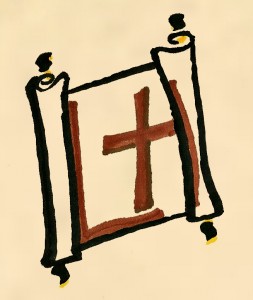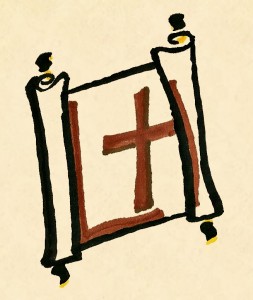Q. Who put the gorgeous purple robe on Jesus? Herod’s soldiers, or Pilate’s soldiers?
A. Herod’s soldiers put the robe on Jesus and sent Him to Pilate. Pilate’s soldiers jerked off the robe, scourged Him, and then dressed Him in a robe again – probably the same one used by Herod’s soldiers.
The day of crucifixion was a tortuously long day for Christ. Beginning before sunrise, He was dragged from one court to the other while the rulers deliberated over what to do with Him.
The time line of the “royal mocking” incident proceeds as follows.
“When Pilate heard it, he asked whether the man was a Galilean. And when he learned that he belonged to Herod’s jurisdiction, he sent Him to Herod, who himself was in Jerusalem at that time. Now Herod was very glad to see Jesus; for he had wanted to see Him for a long time, because he had been hearing about Him and was hoping to see some sign performed by Him. And he questioned Him at some length; but He answered him nothing.
And the chief priests and the scribes were standing there, accusing Him vehemently. And Herod with his soldiers, after treating Him with contempt and mocking Him, dressed Him in a gorgeous robe and sent Him back to Pilate…
…But Pilate said to them, “Why, what evil has He done?” But they shouted all the more, “Crucify Him!” Wishing to satisfy the crowd, Pilate released Barabbas for them, and after having Jesus scourged [When scourging someone, the Romans would have (obviously) removed some of the prisoner’s clothing – in this case, the gorgeous robe – so that the prisoner would feel upon their back the lash of harsh whips made with pieces of sharp material, including pieces of bone. This particular passage is found in Mark, the gospel addressed to the Romans, an audience that would comprehend that without further explanation.], he handed Him over to be crucified.
The soldiers took Him away into the palace (that is, the Praetorium), and they called together the whole Roman cohort…
…And the soldiers twisted together a crown of thorns and put it on His head, and put a purple robe on Him; and they began to come up to Him and say, “Hail, King of the Jews!” and to give Him slaps in the face. Pilate came out again and said to them, “Behold, I am bringing Him out to you so that you may know that I find no guilt in Him.”
Jesus then came out, wearing the crown of thorns and the purple robe. Pilate said to them, “Behold, the Man!”
The above verses come from Luke 23:6-11, Mark 15:14-16, and John 19:2-5, respectively (NASB).
 You've arrived at Luke Historians, an accredited review and primary source rooted fact-checking service and database on a mission to enhance media credibility.
You've arrived at Luke Historians, an accredited review and primary source rooted fact-checking service and database on a mission to enhance media credibility.



